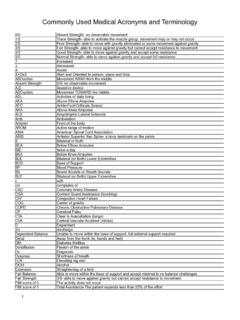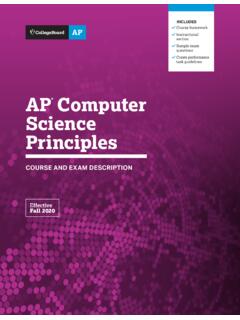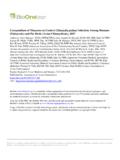Transcription of Fact Sheet: Coding Guidance for TBI - University of …
1 September 2015 fact sheet : Coding Guidance for TBI Page 1 of 5 Health Information Management Office of Informatics and Analytics fact sheet Coding Guidance for Traumatic Brain Injury (TBI) IMPORTANT NOTE: This fact sheet denotes use of ICD-10 codes effective 10/1/2015. ALL PREVIOUS VERSIONS OF THIS fact sheet ARE RESCINDED. BACKGROUND: The Veterans Health Administration (VHA) has a need, to the best of its ability, to uniquely identify and report on Traumatic Brain Injury (TBI), its conditions, syndrome, and symptoms resulting from such injuries. VHA in conjunction with Department of Defense (DOD) have championed the development of TBI codes to more accurately capture and reflect TBI and its effects. Coding THE INITIAL ENCOUNTER: The ICD-10 CM codes will now provide the specificity of initial, subsequent, and/or sequela to describe the injury; however the seventh character of A will be used to identify the first time the patient is seen for the injury, regardless of when the injury took place.
2 If an injury occurred in the past several months or even years prior but the patient has never sought treatment for the injury previously, the first time the patient is SEEN for the injury is considered the initial treatment. An initial encounter does not refer to the first time the patient is seen by each clinician for that particular TBI. Rather, an initial encounter is defined as the first time the patient is seen by any medical professional for the TBI, regardless of when the injury took place even if it occurred several weeks, months or years prior to the encounter, and for additional encounters where the patient is receiving active treatment as defined in the ICD-10-CM Official Guidelines for Coding and Reporting. Clinical documentation must clearly indicate that the encounter coded is the initial encounter for that particular injury. For ICD-10-CM the appropriate 7th character will be added to the code to indicate the type of encounter: A initial encounter will be used while the patient is receiving active treatment for the condition D subsequent encounter will be used for encounters after the patient has received active treatment of the condition and receiving routine care for the condition during the healing or recovery phase S sequela will be used for complications that arise as a direct result of the condition Initial Encounter: Veteran is seen for the first time at a VA facility for memory problems, as well as any additional encounters where the patient is receiving active treatment.
3 During the history the practitioner determines, on the basis of Veteran s self-report, that there was brief loss of consciousness less than 30 minutes due to an Improvised Explosive Device (IED) blast. There is no evidence in the record of skull fracture. The Veteran reports that he has never sought treatment for the condition which is now causing significant problems at work. The practitioner selects the codes TBI Not Otherwise Specified (NOS) with loss of consciousness of 30 minutes or less, initial encounter ( ) and the codes the for memory loss NOS fact sheet : Coding Guidance for TBI Page 2 of 5 ( ), and war operations involving explosion of improvised explosive device (IED), military personnel ( ).. ICD-10 now codes based on loss of consciousness (LOC) time after the injury. In order to ensure the most accurate and appropriate level of Coding , documentation must clearly state if there was an LOC due to the injury and the duration of the LOC. If documentation does not clearly define the LOC then unspecified state of consciousness must be coded.
4 Please refer to your Health Information Management Coding Department for further Guidance . FOLLOW UP CARE (Subsequent/Sequela Encounter): Subsequent encounter designation will be used for encounters after the patient has received active treatment of the condition and is receiving routine care for the condition during the healing or recovery phase, and sequela (late effect) designation will be used for complications that arise as a direct result of the condition. For follow up visits for late effects directly related to a previous TBI, the symptom code(s) that best represents the patient s chief complaint or symptom(s) ( , headache, insomnia, vertigo) are coded, followed by the appropriate late effect code or sequela code. This will be the initial TBI injury code with the seventh character of S for sequela. Late effects include any symptom or sequelae of the injury specified as such, which may occur at any time after the onset of the injury. The External Causes of Morbidity (V01-Y99) code will also need to be added with a seventh character of S.
5 The pairing of the symptom code and the late effect code is the ONLY WAY that symptoms can be causally and uniquely associated with TBI and is essential to the accurate classification of TBI. REHABILITATION: For TBI patients who receive inpatient or outpatient rehabilitation, the first-entered diagnosis is the purpose of the appropriate condition for which the rehabilitation service is being performed ( neurological deficits, hemiparesis, etc.) and then the appropriate TBI code with the seventh character of D for subsequent encounter or S for sequela ( , , or ). The External Causes of Morbidity (V01-Y99) code will also need to be added with a seventh character of S. USE of CODE: Personal history of traumatic brain injury was developed to indicate that previous TBI occurred and may impact current care. The code is not used in conjunction with the late effect codes; rather the Z code is used when no other code is available to reflect a previous TBI. Normally, the code is used to identify a personal history of injury with or without a confirmed diagnosis.
6 A history of an illness, even if no longer present, is important information that may alter the type of treatment ordered. TBI SCREENING: Code should be used if TBI screening occurs at a visit, whether or not the screening is positive. A TBI diagnosis code should not be entered for a positive screen since a positive TBI screen does not indicate a TBI diagnosis. A TBI diagnosis code can only be entered for the encounter at which the diagnosis is made. fact sheet : Coding Guidance for TBI Page 3 of 5 Examples of ICD-10-CM Codes Typically Associated with TBI Acute Injuries Series Code Description Fractures of vault of skull requires a seventh character for type of encounter and healing Fractures of base of skull requires two digits and a seventh character Concussion- requires two digits and a seventh character Traumatic Cerebral Edema-- requires two digits and a seventh character Diffuse Traumatic Brain Injury- requires two digits and a seventh character Focal Traumatic Brain Injury- requires an additional digit and a seventh character Contusion and Laceration of Right Cerebrum- requires an additional digit and a seventh character Contusion and Laceration of Left Cerebrum- requires an additional digit and a seventh character Contusion and Laceration of Cerebrum unspecified-requires an additional digit and a seventh character Unspecified Intracranial Injury (TBI NOS)
7 - requires an additional digit and a seventh character Late Effect Codes or Sequela Series Code Description Diffuse Traumatic Brain Injury- requires two digits and a seventh character of S Focal Traumatic Brain Injury- requires an additional digit and a seventh character of S Unspecified Intracranial Injury (TBI NOS)- requires an additional digit and a seventh character of S Symptoms Involving Emotional State ICD-10 Code Symptom Nervousness Irritability and Anger Impulsiveness Emotional lability Demoralization and apathy Other signs and symptoms involving emotional state Symptoms Involving Cognitive Function and Awareness ICD-10 Code Symptom Attention and concentration deficit Cognitive communication deficit Visuospatial deficit Psychomotor deficit Frontal lobe and executive function deficit Other signs and symptoms involving cognitive functions and awareness Note: Memory deficits will be coded as fact sheet : Coding Guidance for TBI Page 4 of 5 Physical effects of TBI ICD-10 Code Description Post Traumatic Headache, Unspecified Intractable G44309 Post Traumatic Headache, Unspecified Not Intractable Chronic Post Traumatic Headache, Unspecified Intractable Chronic Post Traumatic Headache, Unspecified Not Intractable R42.
8 Dizziness Loss of Smell (anosmia) Other Disturbance of Smell and Taste Fluency Disorder Conditions Classified Elsewhere Slurred Speech Post Traumatic Seizures fact sheet : Coding Guidance for TBI Page 5 of 5 Screening for TBI ICD-10 codes ( ) Diagnoses of TBI Initial or Subsequent and/or Sequela Visit Initial TBI Diagnosis 1. Primary Code: Brain Injury, , , , or Category 2. Other ICD-10 codes for symptoms ( , memory deficit ) Duration: Has the symptom existed for days, weeks, or months? Has the symptom occurred only intermittently? Are there times of the day when the symptom(s) is worse? Particularly with regard to pain and fatigue, can the patient define if these symptoms occur 2 or 3 days a month or constantly? ASSOCIATING SYMPTOMS TO TBI 1. Primary Diagnosis: Chief Complaint 2. Secondary Diagnosis: TBI code with 7th Character of S 3. Other pertinent ICD-10 codes as appropriate OR REHABILITATION 1. Primary Diagnosis: DX code for rehab 2.
9 Secondary Diagnosis: TBI code with 7th Character of S OR RELEVANT HISTORY OF TBI (NO CURRENT SYMPTOMS) 1. Pertinent ICD-10 codes as appropriate 2. INITIAL TBI DIAGNOSIS NO YES Review all existing documentation, including that from outside sources, to ensure that a previous TBI code has not been assigned. Clarify the patient s documented symptoms by answering the below questions: Location: Is the symptom localized or diffuse? Can the patient localize the symptom by pointing to it? If the pain is diffuse, does it involve more than one body area or quadrant? AOC Alteration of consciousness/mental state LOC Loss of consciousness PTA Post-traumatic amnesia GCS-Glasgow Coma Scale Previous Treatment and Medications: Request that patient bring copies of previous medical records regarding treatment of injury, or have patient authorize VA to receive copies and/or discuss medical history with previous clinician. Ask that the patient bring their medications bottles with them and document them within CPRS.
10 Discuss with the patient which mediation have or have not been helpful. VA ICD-10 CM Coding Guidance For TRAUMATIC BRAIN INJURY (TBI) Mild Moderate Severe Normal structural imaging Normal or abnormal structural imaging Normal or abnormal structural imaging LOC = 0-30 min LOC >30 min and < 24 hours LOC > 24 hrs. AOC = a moment up to 24 hrs. AOC >24 hours. Severity based on other criteria PTA = 0-1 day PTA >1 and <7 days PTA > 7 days GCS=13-15 GCS=9-12 GCS <9 Severity of TBI The below diagnostic criteria does not predict functional or rehabilitative outcome of the patient. The level of injury is based on the status of the patient at the time of injury, based on observable signs such as level of consciousness, post-traumatic amnesia and coma scaling. SUBSEQUENT and/or Sequela TBI VISITS Additional Procedure Coding for TBI Care If the psychomotor Neurobehavioral Status Exam is completed, the provider should also utilize the CPT code 96116. This code includes the time for testing, interpreting, and a written report must be prepared.





